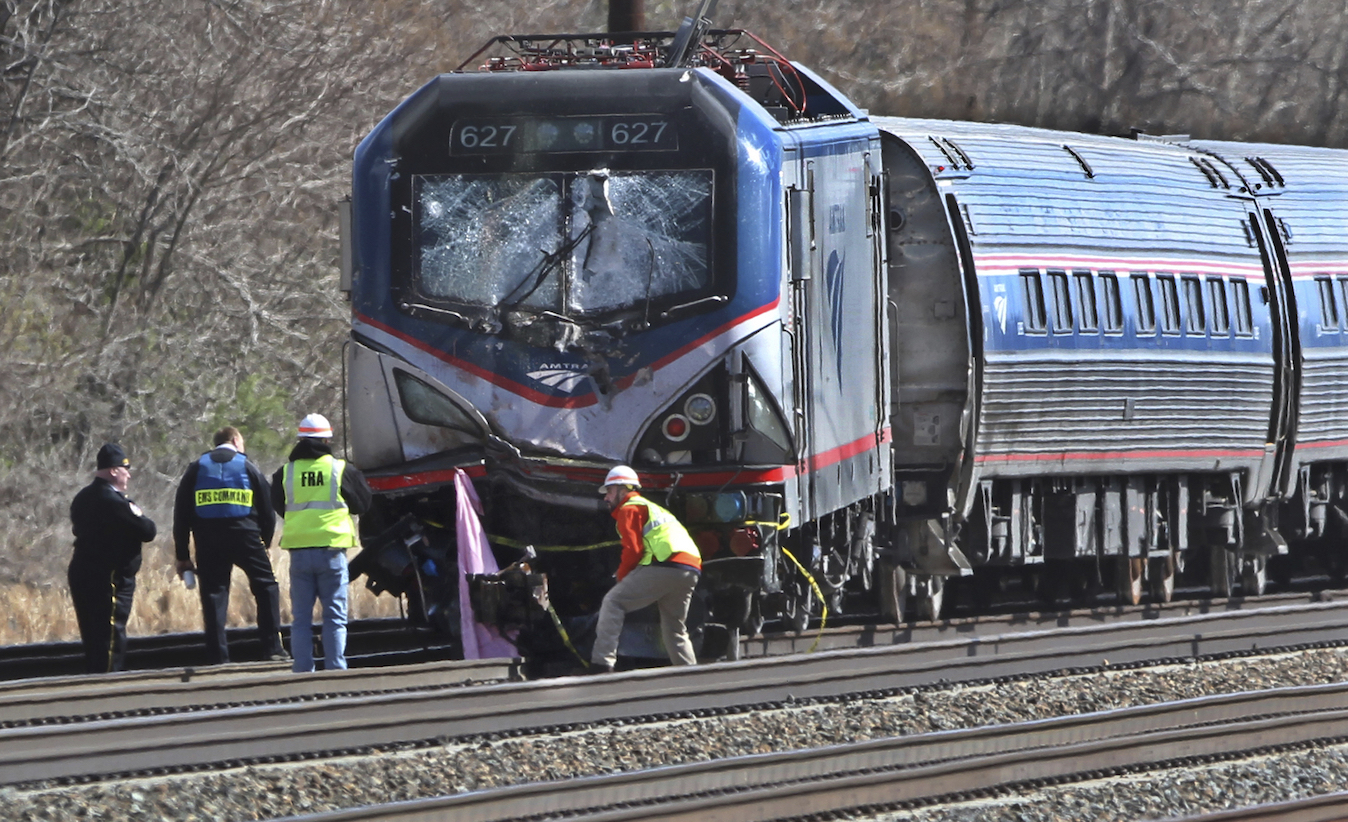

Lax oversight and a failing safety culture are to blame for an Amtrak train derailment that killed two people in Pennsylvania last year, according to federal investigators.
“Amtrak’s safety culture is failing, and is primed to fail again, until and unless Amtrak changes the way it practices safety management,” National Transportation Safety Board Chairman Robert Sumwalt said in a statement.
A backhoe operator and a track supervisor were killed, and 39 people injured, when an Amtrak train traveling on the Northeast Corridor from Philadelphia to Washington, D.C. went off the tracks near Chester, Pennsylvania, on the morning of April 3, 2016.
The train engineer saw equipment and people working on and near the track and started emergency braking that slowed the train from 106 mph to 99 mph when the train struck a backhoe.
Allowing a passenger train to travel at maximum authorized speed on an unprotected track where workers were present and the foreman’s failure to conduct a job briefing at the start of the shift helped cause the accident, the NTSB found on Tuesday.
The agency also cited “numerous inconsistent views of safety and safety management throughout Amtrak” for leading to the derailment.
The Federal Railroad Administration’s failure to require redundant signal protection, such as shunting, for maintenance-of-way work crews, contributed to this accident, the NTSB noted.
The men killed in the accident both tested positive for cocaine, while the locomotive engineer tested positive for marijuana. However, the NTSB found drug use not be a factor in the derailment. The toxicology results, however, are “symptomatic of a weak safety culture at Amtrak,” the agency said.
Only the engineer, as a train crew member, would have been subject to random drug testing at the time of the accident.
During the summer, federal regulators broadened a testing program to include track maintenance workers. On Monday, the FRA issued a rule mandating testing
for opioids starting in January.